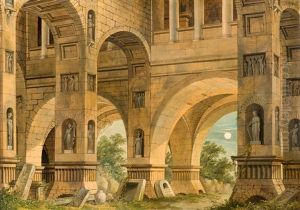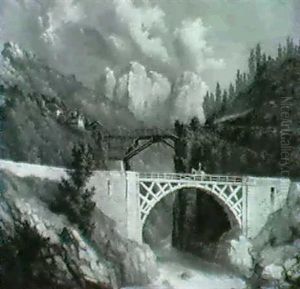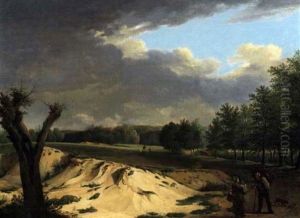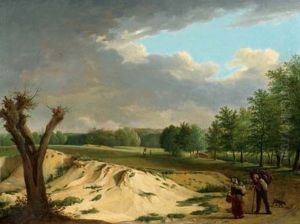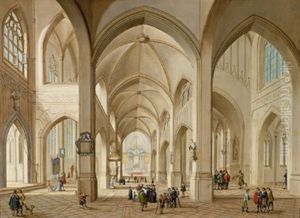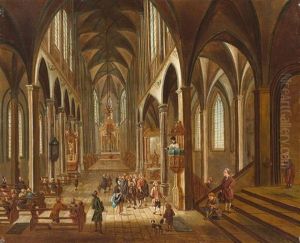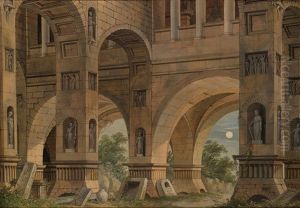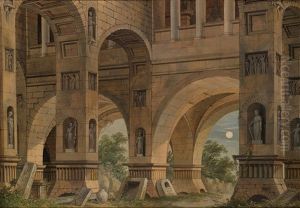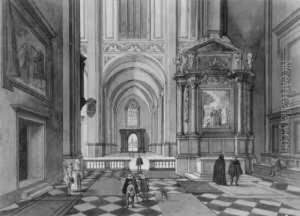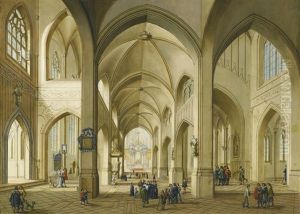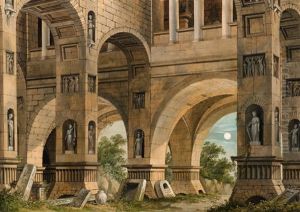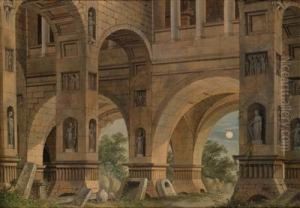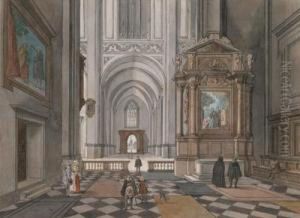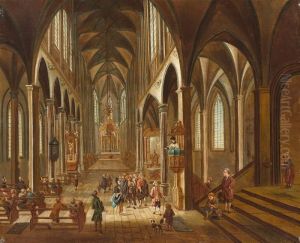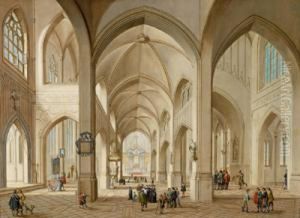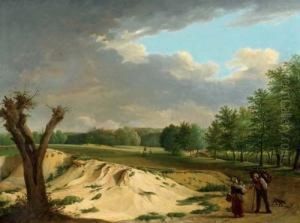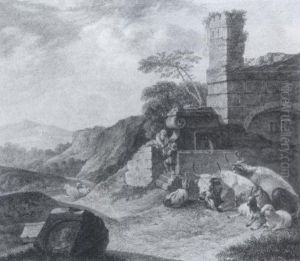Johann Friedrich Morgenstern Paintings
Johann Friedrich Morgenstern was a notable German painter, primarily recognized for his landscape and architectural paintings. Born on September 27, 1777, in Frankfurt am Main, Germany, Morgenstern showed an early interest in the arts, which was nurtured by the cultural atmosphere of his hometown. He initially trained under his father, Johann Ludwig Ernst Morgenstern, who was also an accomplished painter, specializing in architectural views. This early exposure laid the foundation for Johann Friedrich's later works, which often depicted intricate architectural elements within natural landscapes.
Morgenstern's style was greatly influenced by the Romantic movement, which was prevalent in Germany and across Europe during his lifetime. His landscapes often conveyed a sense of awe towards nature, blending realism with a romanticized perspective. He was adept at capturing the interplay of light and shadow, a skill that added a dramatic effect to his compositions. Despite his leaning towards romanticism, Morgenstern maintained a high level of detail and accuracy in his architectural renderings, a testament to his technical abilities and understanding of perspective.
In addition to his painting, Morgenstern was involved in the academic side of the arts. He took up a position at the Städelsches Kunstinstitut in Frankfurt, where he contributed significantly to the education of future artists. Throughout his career, Johann Friedrich Morgenstern exhibited his work in various venues, gaining recognition and respect from his contemporaries. His contributions to German art were not limited to his own creations but extended through his influence on his students and his efforts to elevate the status of landscape painting within the academic community.
Johann Friedrich Morgenstern passed away on March 17, 1844, in Frankfurt am Main. His legacy is preserved in the collections of several German museums, where his works continue to be appreciated for their beauty and historical value. Morgenstern's paintings remain a testament to the Romantic era's fascination with nature and the meticulous depiction of architectural elements, bridging the gap between realism and romanticism in German art.
